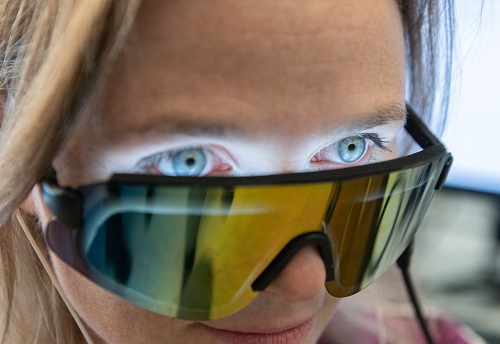Several studies have indicated that flickering light can help to cure Alzheimer disease. A new study published by researchers at Georgia Institute of Technology and Emory University further identifies how the flickering light works. The researchers found that the exposure to light pulsing at 40 hertz – 40 beats per second – causes brains to release a surge of signaling chemicals that may help fight the disease. The new finding was published in the Journal of Neurosceince on February 5, 2020.
In 2016, flickering light was first linked with Alzheimer disease with the discovering that light flickering at 40 Hz mobilized microglia in mice afflicted with Alzheimer’s to clean up that junk. Later on, other researchers followed up to further understand the effect of the light treatment.

(Image: Georgia Tech)
This new study of Georgia Tech looked for brain chemistry that connects the flicker with microglial and other immune activation in mice and exposed a surge of 20 cytokines – small proteins secreted externally by cells and which signal to other cells. Accompanying the cytokine release, internal cell chemistry – the activation of proteins by phosphate groups – left behind a strong calling card.
“The phosphoproteins showed up first. It looked as though they were leading, and our hypothesis is that they triggered the release of the cytokines,” said Singer, who co-led the new study and is an assistant professor in the Wallace H. Coulter Department of Biomedical Engineering at Georgia Tech and Emory.
The surging cytokines hinted at a connection with microglial activity, and in particular, the cytokine Macrophage Colony-Stimulating Factor (M-CSF).
“M-CSF was the thing that yelled, ‘Microglia activation!’” Singer said.
The researchers will look for a causal connection to microglia activation in an upcoming study, but the overall surge of cytokines was a good sign in general, they said.
The research team warns against people improvising light therapies on their own, since more data is needed to thoroughly establish effects on humans, and getting frequencies wrong could possibly even do damage.












